Getting Started with Badging—A Guide to Help Plan For and Design Your Badging Initiative
Introduction
Thinking about creating digital badges? Well, you are not alone. A wide variety of educational providers currently offer digital badges. In fact, one in five institutions now offer digital badges (Fong et al., 2016) and research suggests that the total number of available badges for learners to earn is over 475,000 with a total of over 43 million badges awarded to date (IMS Global Learning Consortium and Credential Engine, 2020)! And the numbers keep growing. In the span of one and a half years, there was an 82% increase in total available badges and an 80% increase in badges issued.
With so much growth, it can be easy to get caught up in the excitement of creating digital badges, but where to begin and what to consider? This guide is designed to serve as a tool to help quick start and plan a digital badging process at your institution that is context specific and designed to meet your institution and student needs.
What are Badges?
Badges, or digital badges, serve as a mechanism by which educational providers can capture and communicate learner accomplishment in the form of metadata. The documentation of accomplishment, or attainment of knowledge and skills, can be gained through a wide variety of learning and professional development opportunities, within or outside of traditional course structures.
As a digital badge, the evidence and validation of learning attainment is portable and can be displayed on the web and social media. More than an icon, digital badges provide an information-rich record of verifiable achievements with information provided on who earned the badge, where and when, the criteria required for achievement, and the owner or issuer of the badge.
| Explore the IMS Global Learning Consortium standard for Open Badges which helps enable transparency and portability via the Open Badge format if you want to learn more about what is behind a badge. |
Four Steps for Badging
To help educational providers interested in implementing digital badges within their learning environment, this guide provides 4 steps to consider in determining badge design: 1—Why Badging?, 2—What to Badge?, 3—Evidence of Attainment, and 4—Validation.
1. Why Badging?
The first question to ask is: Why badging? What problem is trying to be solved? While it is easy to jump into determining work flow and models of internal approval and review, the first question in any badge design conversation from which all future decisions flow should be: why badging?
Further design decisions on what to badge and what evidence to include will depend in part on whether the purpose of digital badges is to foster student learning and awareness of learning or provide clarity on knowledge and skills to employers.
To Support Students
Digital badges provide the opportunity to break student learning and competency attainment into bite size chunks. Providing badges for student attainment of knowledge and skills along the way can help to keep learners engaged, celebrate the progression of learning, and help students to understand and see the value of their educational pathway through a lens focused on learning.
Through making pathways and intentional educational scaffolding transparent to students, digital badges provide value to learners while they are moving through their education as opposed to documenting it at the end of the learning journey in a traditional transcript. By showing what students learn in and out of educational settings, students are provided with a means to document the holistic nature and fulsomeness of their learning in ways that are not currently accounted for on transcripts.
Through digital badges, students are made aware of their knowledge and skills in ways that current educational structures sometimes hide. They also provide a different means for students to showcase and share their learning with employers.
Digital badges allow educational providers to monitor student progress toward larger goals and learning outcomes, and can enhance motivation before and after learning experiences through gamification and opportunities for students to level-up as they attain additional levels of achievement.
To Identify Employability Skills
Digital badges provide a means to assess and document skills that are not often captured in more traditional summative exams and demonstrations of learning (Parker, 2015). With a wider array of evidence to support demonstration embedded within a digital badge, employers are able to gain insight into context and evidence of skill attainment not normally provided in existing institutional transcripts.
Employer-facing badges can even focus upon specific skills and competencies of interest to career pathways or provide validation of student attainment of NACE competencies using language of interest to employers. Further, institutions of higher education serve as an employer for many students, offering opportunities to demonstrate learning through on-campus employment. Digital badges can serve to not only document learning from student employment, but also provide insight to the units which employ students on internal talent development and team formation.
2. What to Badge?
Once the purpose of why digital badges is clear, the next decision to make centers around what will actually be badged. There are many different units of learning or doing that might be digitally badged. For instance, a digital badge might focus upon
- Skills
- Competencies
- Learning Outcomes
- Participation
- Completion
- Levels of Expertise
- Other
The purpose of why digital badges should ideally align with what is being badged, such that if the purpose is to foster student engagement, engagement activities and opportunities become the focus of the badge.
Digital badges may be awarded for pathways connected to programs, for competency attainment, for demonstration of skills or mastery of a concept, or for exhibiting skills such as collaboration. They may be given for participation from attending an event or meeting with an advisor; or for completion of a course or watching a video. They may be awarded based on evidence of learning and may be open to all students or only some.
Of note, avoid awarding too many badges or breaking learning into too many discrete parts that it potentially trivializes what the badges represent. Further, work to avoid duplicating existing credentials in determining what to badge. Digital badges should ideally address learning not covered on an official transcript, but instead provide supplemental and layered information not found elsewhere.
In mapping out badge offerings, consider how they do or do not relate to one another and if they stand alone or interconnect. Do they operate outside of existing curricular and co-curricular offerings or are they embedded within? In addition, consider who has access to which badges. Are particular student populations such as adult learners interested in documenting prior-learning assessment eligible for badges or are they open to any and all learners? The answers to these questions will help determine the assessment process needed for awarding the digital badge and serve guidance on what is needed for evidence of attainment.
3. Evidence of Attainment
Once there is clarity on why badges and what will be badged, the next step in the badging journey is to determine the evidence of attainment that will be embedded within the digital badge. Ask yourself:
- What is the criteria for issuing the badge? Does it expire?
- What is the evidence that supports the badge? In other words, what is behind the digital badge?
- Where will that evidence come from? Is it something that students provide or will it be gathered as part of the experience?
- What does a student need to show or prove in order to receive the badge? What evidence is required to award it?
- Is there an expectation for a particular level of demonstration of knowledge and expertise? If so, what is the evaluative criteria that will be used to review the evidence? Who will review it to determine attainment?
The evidence of attainment, or assessment, helps to make clear the value of each badge to learners and employers by showing the evidence of what was needed to earn a particular badge. For digital badges that are based upon participation and completion, what evidence will be included as proof that students participated or completed the experience? It may be that a badge awarded for watching a video or completing a course does not include a formal assessment, but instead provides documentation of completion as the evidentiary support. For digital badges focused on skills, competencies, and learning outcomes, how will attainment be assessed? In essence, what evidence will be linked to the badge and how will it be assessed? This may take the form of a video, photography, completed assignment, paper, or other artifact of demonstrated learning.
Evidence of attainment is important to the integrity of digital badges because otherwise, it is unclear to a viewer why a particular learner has a particular badge. Connecting the badge to evidence provides the linked data which serves as justification of the badge and allows a viewer to determine the relevancy of the badge to their particular context.
4. Validation
The last step in our four-step process of developing a digital badge initiative or program is to determine who owns or validates the badge. Not only do badge viewers want to know that this particular student earned this particular badge, they also want to know who issued the badge. For institutions of higher education, validation entails a clear internal workflow for who reviews the evidence of attainment or completion, and who recognizes and validates that the evidence meets the necessary criteria in order to award a badge.
For digital badge platforms that allow students to upload their own evidence of attainment, clarity on the process of reviewing (whether by committee and/or faculty) self-issued badges and an indication of whether the evidence has been verified and validated by an educational provider is needed for external viewers to determine validity of the digital badge. As argued by Parker (2015), “In the eyes of the viewer, the credibility of a badge may correlate with the credibility of the issuer (an established university versus an unknown individual) and the validity will be determined by the quality of the supporting documentation contained in the badge”(p. 3). Thus, for validation, a viewer needs to know what was badged (Step 2) and the evidence of attainment (Step 3) in order to determine validity of a digital badge.
Digital badges that do not contain evidence of attainment or provide the option for a viewer to drill down and examine evidence behind the badge, raise questions because it is not clear what a learner had to do in order to earn a particular badge. In contrast, digital badges that include metadata on who issued the badge, the criteria for receiving the badge, and the evidence that was reviewed to determine the criteria was met, provide the necessary information for viewers to determine validity of the badge.
Next Steps
The four steps outlined in this quick guide provide starting points for designing a digital badging initiative. There are, however, a few additional points to consider to ensure success of digital badging.
1. Stakeholder Involvement.
Determine early on, depending upon the purpose and focus of the digital badges, whether students and/or employers should be directly involved in the development process.
2. Communication Plan.
Determine which learners will have access to and opportunities to achieve the badge. Create a communication plan that includes how students will learn about badging opportunities as well as the value of the digital badges. This may include a marketing plan.
3. Choose Technology.
To avoid students manually claiming badges or faculty and staff manually awarding them in ways that are time intensive and do not scale, consider a technology platform that can automate the process. An automated process ensures that badges do not go unclaimed. Further, ensure the technology solution is one that integrates assessment with badging to ensure that badges are not separated or dependent upon add-on workflows (Markowitz, 2018).
Contact Us
Ready to start your badging program? If you have specific questions regarding badging in the AEFIS Platform, please contact us:
| Kallie Rogers, Associate Manager of Client Development [email protected] | Schedule a Meeting with Me |








